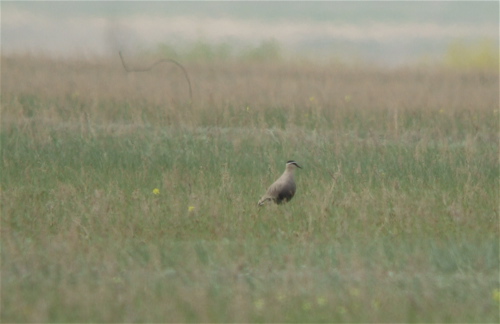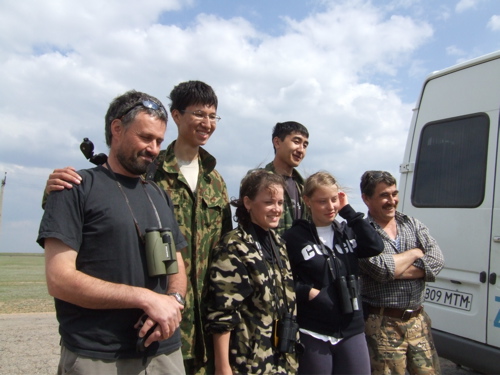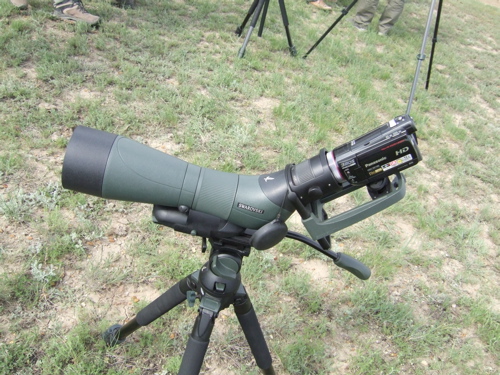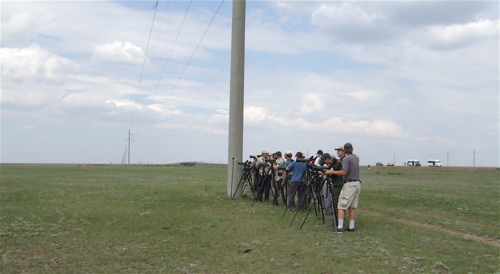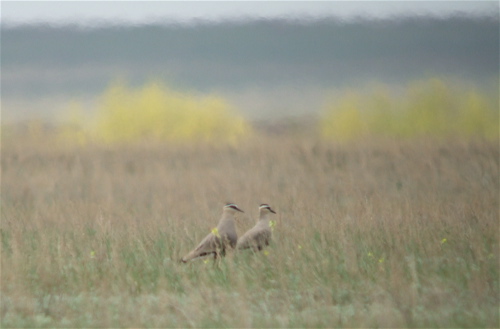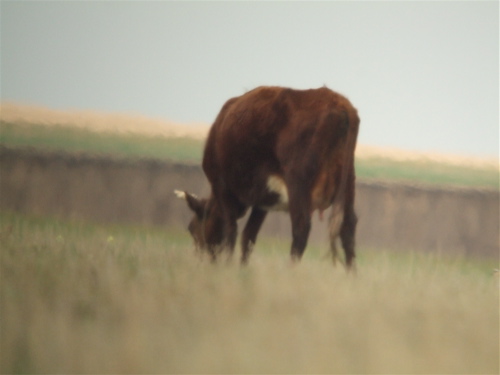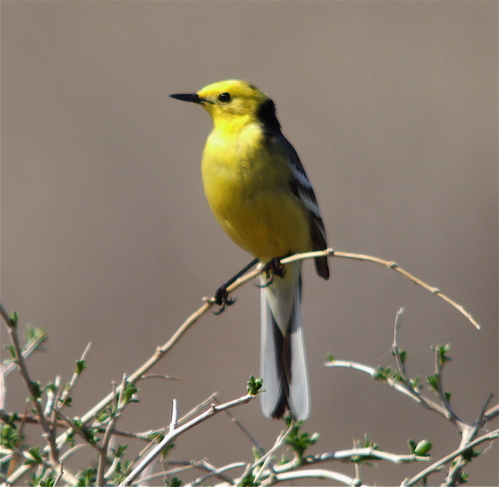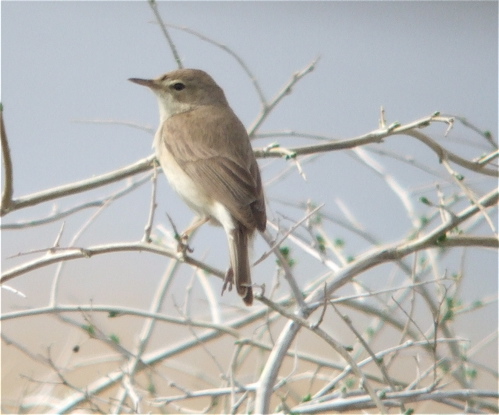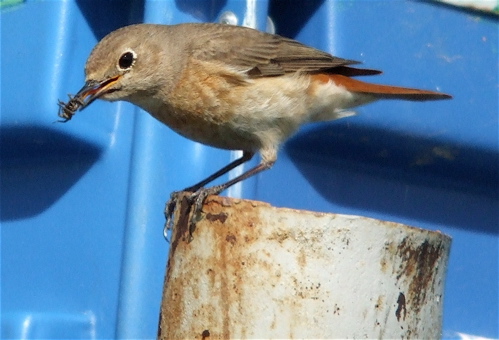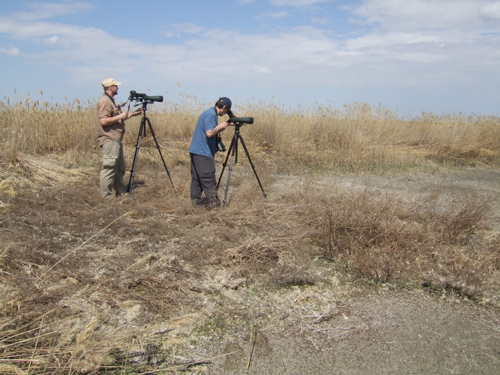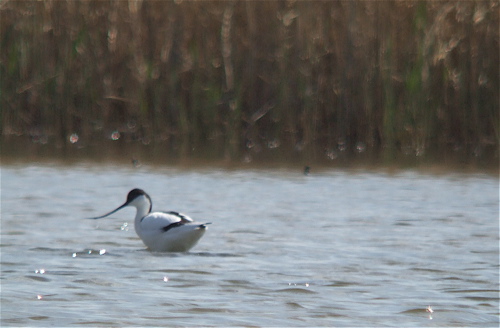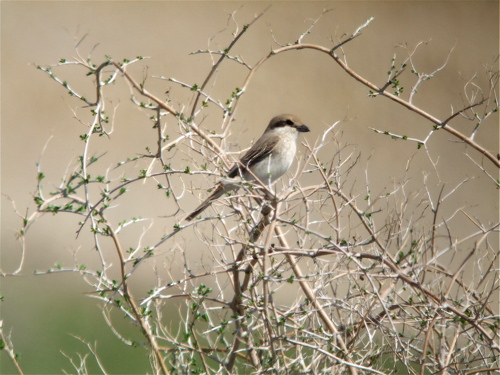Now that spring migration has settled down a bit, I can talk more about Kazakhstan. I took out a group this weekend for some birding and one asked, "Why did you go to Kazakhstan?" There were several reasons, the biggest was that I have always wanted to go ever since I read about the country years ago. It sounded wild, remote and untamed.
The other reason was a bird called the sociable lapwing (kind of a very snazzy killdeer--seen above). Swarovski Optik is a species champion of this bird through BirdLife International. It's a bird population that has dramatically declined in recent years and is of great concern. It's not certain what the original population was on the Steppes of Kazakhstan. There was a count of 5,000 birds in 1990 and another count in 2002 put their numbers at 1200 in 2002.
Current research suggests that the decline of the sociable lapwing is due in part to unevenly grazed habitat. Sociable lapwings used to live among ungulates known as saiga (do click on the photo of the saiga, that is one crazy looking ungulate). As the saiga declined, so did the sociable lapwing numbers. Incidentally, there were about 2 million saiga on the Kazakh Steppes in the 1950s, but a dramatic decline hit in the 1990s because of poaching--Saiga horn is used in traditional Chinese medicine as a fever cure. The lapwings apparently really liked the way the Saiga grazed the grasses to make watching for predators good for them when they are nesting.
Swarovski and BirdLife International has made it possible for teams of locals to come out and monitor the lapwings, work with the locals to appreciate the birds and hopefully avoid the nests, and to work with cattle owners to graze in a way that mimics saiga grazing and is favorable for the lapwing. Note the young faces who are part of the Kazak research team, it's local people working with their birds and their communities, not a bunch of foreigners coming in and telling people how to manage their land.
Swarovski is also coming out with a new digiscoping adaptor called the UCA. It's a bit more universal in the sense that many different cameras (even small video cameras) can be attached to the scope and it slides off easily. When we were taken to the sociable lapwing area, we were asked to test out the new adaptor. I have to admit, being on a trip of a lifetime and seeing unbelievable life birds, that last thing I wanted to do was learn a new adaptor for my camera and scope. But it was surprisingly easy to figure out.
Now, the challenge became how to get twenty some odd birders close to skittish ground nesting bird when there isn't a lot of cover. I don't think we were all that sneaky behind that power pole. The researchers had us march in a single file line towards the lapwings, but the rightly suspicious birds just kept walking in the other direction.
We had to be careful, because the females easily flush of the nest and the research team did not want to risk losing one valuable nest of this declining bird. We were getting great looks at the birds, but they were too far away to get great photos.
Plus, heat shimmer was really starting to become a factor. The area behind the cow looks like a van Gogh painting. I even took a video and it looks like a raging forcefield is behind the cow. You'll note that a lone man walks behind the cow, apparently oblivious to the rare and sensitive birds nesting around him. That's part of the research team's job is to work with locals and let them know about these cool birds and hey, maybe don't walk right through their nesting territories right now.
We went out in search of other birds around the Korgalzhyn State Natre Reserve with the adaptors and we were able to get some cool shots. Above is a citrine wagtail--isn't that a fabulous little yellow bird and so accommodating to perch out in the open.
I was even able to digiscope a warbler with the new adaptor--and those aren't easy. I have to say, warblers over in Europe and Asia aren't anything like our warblers here in the Americas. Above is a booted warbler and it pretty much looks like all the other Euro warblers: small, brown and fairly non-descript. Other warblers you can see over there are reed warbler, Hume's warbler, and Savi's warbler--brown, brown, brown. I'm used to prothonotary warbler and blue-winged warbler. I'll never complain about fall warblers in North America again. Even an orange-crowned warbler in the fall is more colorful than a booted warblers.
I also got some amazing shots of a female common redstart...they look a bit different than our American redstarts. It's not a wood warbler like what we see in North America, it's more like a flycatcher. The males are quite snazzy, but so are the females with their red tails. Since she was so accommodating, I thought I would get some video of her with the UCA. My Fuji FinePix E900 does video as well as photos:
[youtube]http://www.youtube.com/watch?v=WptkbSWFwiI[/youtube]
While on the preserve, we also found a nice mudflat to check out for some waterfowl.
Above is Corey from 10,000 Birds and Dale from Discovering Alpine Birds getting some shots of the ducks and shorebirds. Some of the species we saw included spotted redshank (gotta love a black shorebird), red-crested pochard, white-headed duck, and white-winged black tern. There were some familiar birds too. I heard gadwalls calling and I went to grab my cell phone (gadwall is one of my ringtones). Then I remembered that my phone didn't work in Kazakhstan and looked overhead. There were three gadwalls flying over--ah the familiar in a strange land!
We also saw black-winged stilts and pied avocet (that's the avocet pictured above, distinctive with their long, upturned bill).
As we ended our time on the Kazakhstan Steppes, an Isabelline shrike popped up.
I was surprised at the photos I got using the new adaptor that I had not worked with before in a place where I was unfamiliar with the birds. I don't think I will trade in my DCA for digiscoping with my Swarovski scope, but if my current camera craps out and the next one I get does not work with the DCA, I could see myself using a UCA. It's a bit larger, so doesn't fit in a pocket as neatly, but it is light in weight could be hooked around a finger.

